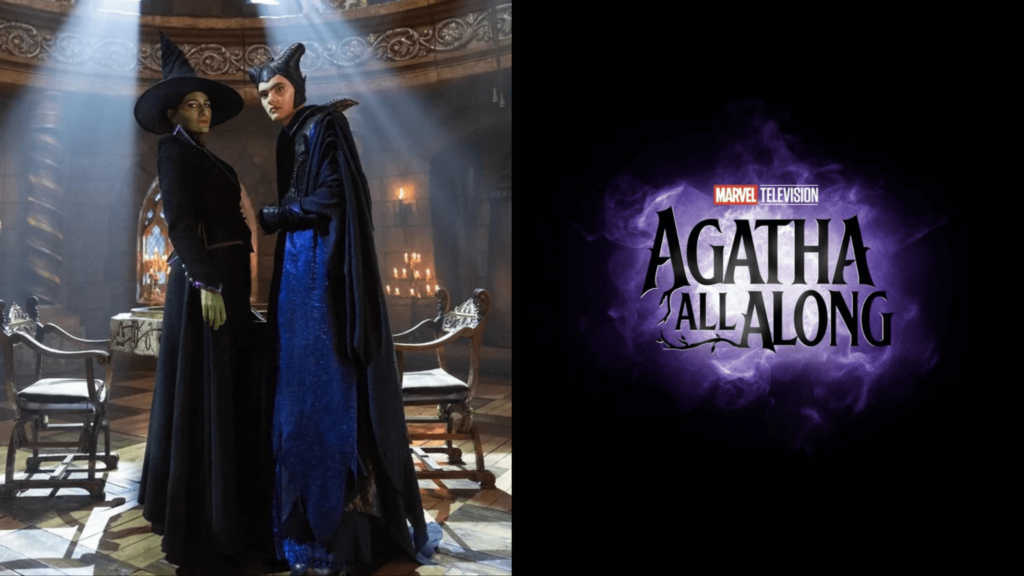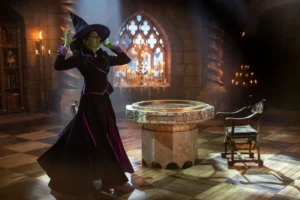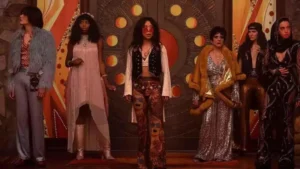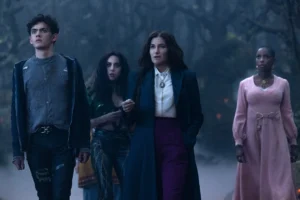Agatha All Along: Unpacking the Pop Culture References
Dive into Agatha All Along’s visual nods to pop culture and discover the magical references behind the Disney+ series.

Agatha All Along pulls out all the stops when it comes to capturing the audience’s attention through clever nods to iconic pop culture and mystical visuals. From witchy aesthetics to outfits inspired by legendary characters, the series adds layers of meaning and depth to its story, connecting viewers to the broader world of witches and magic they know and love.
A Look at Pop Culture’s Influence on Agatha All Along

The creative team behind Agatha All Along didn’t just rely on solid storytelling to capture the audience’s interest—they went above and beyond by weaving visual homages to famous portrayals of witches. These subtle nods serve as easter eggs for eagle-eyed viewers, while also enhancing the show’s atmosphere and themes.
Channeling Maleficent and The Wicked Witch
In Episode 7, we see Billy Maximoff taking on an appearance reminiscent of Maleficent, with a sleek, dark ensemble and horned headwear. This deliberate choice hints at Billy’s mysterious connection to dark magic and reflects his growing power, drawing visual parallels to the legendary Disney villain. Similarly, Agatha’s own attire in several episodes evokes the Wicked Witch of the West from The Wizard of Oz, giving viewers a visual hint of her cunning and potentially sinister nature.
Both of these choices reinforce themes of power and deception, all while subtly tying Agatha and Billy’s characters to iconic villains who were, at times, misunderstood in their own stories.
The Stevie Nicks and Fleetwood Mac Connection

Another iconic influence in Agatha All Along is the coven’s Fleetwood Mac-style aesthetic. Throughout Episode 3, the witches sport bohemian attire that draws directly from Stevie Nicks’ iconic “white witch” persona. Nicks’ influence, with her flowing dresses and ethereal style, evokes the theme of finding your identity within the context of rebellion and self-discovery.
This aesthetic is more than just a fashion statement—it ties into the coven’s journey as they explore their own identities and roles in Agatha’s storyline. It feels like a fitting nod to an era where witches and mysticism blended with counter-culture, reinforcing the show’s narrative of witches fighting against traditional norms.
Alice in Wonderland’s Echoes in the Witches’ Trials
A neat reference in the series comes through the trials on the Witches’ Road, which draws parallels to the whimsical but sinister world of Alice in Wonderland. In Episode 4, the scene featuring the “Play Me” record is a clear nod to Alice’s “Drink Me” bottle. This little Easter egg reinforces the sense of adventure, self-discovery, and mystery while reminding viewers of how classic tales of strange lands and trials fit into Agatha All Along’s narrative of witches facing hidden dangers and inner demons.
The Wizard of Oz’s Influence Beyond the Costumes
It’s not just Agatha’s Episode 7 costume that draws from The Wizard of Oz. The show leans into its themes of self-discovery and power through both visual and storytelling elements. From nods to magical shoes to the illusion-breaking moments that mirror The Wizard of Oz’s revelations, the series plays with these elements to explore themes of deception and authenticity. Just like the characters in Oz sought their true identities, Agatha and her coven grapple with self-awareness and redemption.
Blending Pop Culture and Witchcraft Lore

The pop culture references in Agatha All Along do more than just throw in fun Easter eggs—they add layers to the storyline by connecting it to familiar visuals and themes. By drawing from well-known portrayals of witches, like Stevie Nicks’ mystical boho vibe, Maleficent’s regal but dark edge, and The Wizard of Oz’s classic fantasy world, the series builds a bridge between what we already know and what’s new in the MCU’s magical universe. It’s a smart way to make Agatha’s journey feel both fresh and like part of a bigger tradition of witchcraft in media.
Wrapping Up the Visual Magic
Agatha All Along isn’t just an extension of WandaVision. It’s a deeper dive into classic witchy themes, using pop culture as a storytelling tool. Whether it’s the rebellious witch vibe inspired by Stevie Nicks, Agatha’s nod to classic villains like the Wicked Witch, or even hints of dark elegance straight out of Maleficent, these elements enrich the series. They don’t just serve as nostalgic throwbacks—they bring in extra layers that make the story feel textured and engaging for everyone.
The pop culture nods in Agatha All Along aren’t just for show. They help tell a story that’s not just about magic, but about finding power and identity in a world full of familiar symbols and fresh twists.
